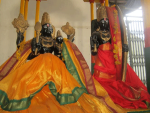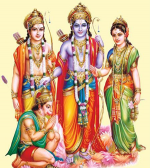Humpi’s Varaha Temple!

We have learnt a lot about the structures and inscriptions of the architecture of temples in Humpi, through our History books. What we were not told is the details of temples in that beautiful city. Today I will help you explore the same. In this article let us focus on the Varaha temple of Humpi.
The temple was built during the reign of the Vijayanagara Empire which takes us back to the 13th century. It was an important place of worship then and now it is a popular tourist attraction. It is a temple dedicated to Lord Varaha the third incarnation of Lord Vishnu among the Dasavataras [10 forms]. Let us now dive into the story behind this incarnation.
There was a demon by the name Hiranyaksha who by his evil powers dragged down the Earth to the bottom of a mythic ocean. Now all the gods where worried as to who will go down into that ocean and bring back the Earth. During this period of crisis, Lord Vishnu took the form of Varaha to bring out the earth from the ocean.
It is said that the Lord in his Varaha avatar [form] battled demon Hiranyaksha for as many as thousand years before emerging victorious. He emerged from the ocean, holding the Earth between his tusks and came to be known as the eternal upholder of the Earth.
The uniqueness of the temple lies in its architecture. It was built in the Vijayanagara style with bas-relics of boars carved on the insides. The temple can be reached by air, by train or by bus depending on the distance you are at, from the temple. Let us understand some more facts about the temple.
The temple is open for visitors from 9am to 5pm on all days of the week. The Varaha temple of Humpi is one of the very few temples in India where no entry fee or parking fee is charged. There is also no restriction on clicking pictures or taking a video of the temple. This is also very rare in Indian temples.
It is said that the best time to visit the Varaha temple of Humpi is during the period beginning from November and ending in February. Now why it is like that... You must find out for yourself.
Kruti Beesam
















